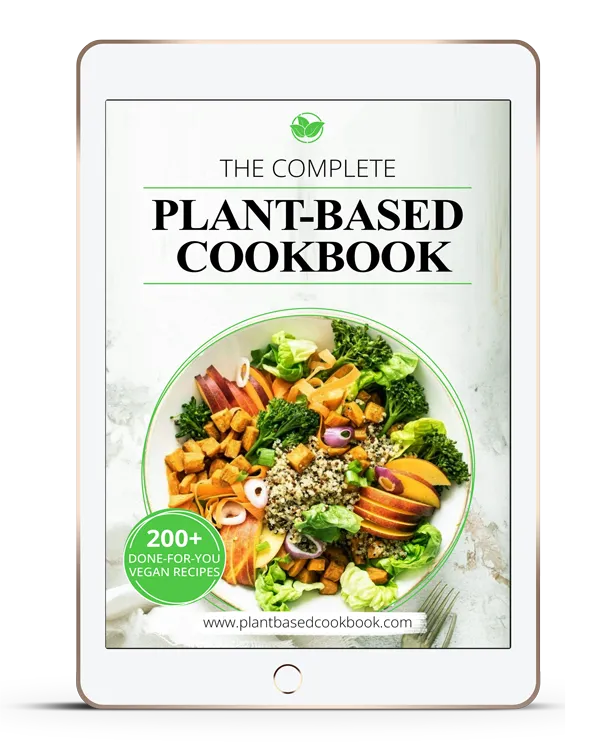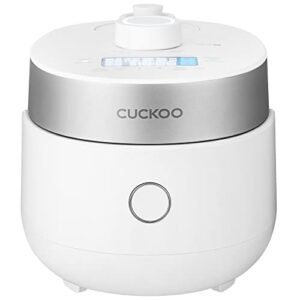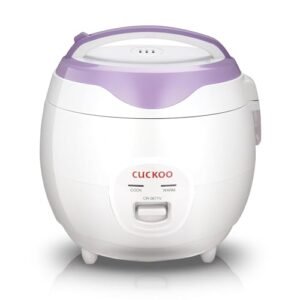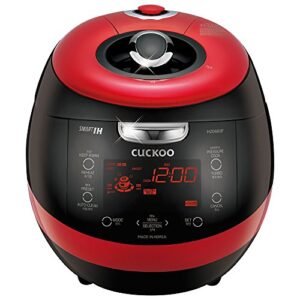While rice cookers make our lives easier with perfect grains every time, they can become a cleaning nightmare if we don’t maintain them properly. We’ve all faced that dreaded moment of discovering crusty rice remnants or mysterious stains inside our beloved appliance. It’s not just about aesthetics – if you understand how to clean a rice cooker then you will benefit from better-tasting food and a longer-lasting machine.
So, let’s explore the essential steps to keep our rice cookers spotless, because the difference between a mediocre meal and a spectacular one often lies in the cleanliness of our cooking tools.
Table of Contents
ToggleWhat is the best way to clean a rice cooker?
Let’s start by carefully removing the inner pot of the rice cooker and any accessories to make sure we can clean every part thoroughly.
Proper maintenance is essential for extending the life of your appliance, just like with other kitchen equipment. Following recommended cleaning practices can help prevent potential damage and ensure consistent performance.
We’ll use warm soapy water and a soft sponge to clean both the inner pot and the cooker’s body, making sure to reach all those corners and crevices where residue might hide.
For the best results, we should clean our rice cooker after each use, but at minimum once a week to prevent mold growth and maintain top-notch cooking performance.
How to remove the inner pot for cleaning?
Removing the inner vessel from your rice cooker is a straightforward process that’s crucial for thorough cleaning. Let’s walk through the steps to safely extract and prepare the inner pot for washing.
| Step | Action |
|---|---|
| 1 | Unplug and allow your rice cooker to cool down completely |
| 2 | Lift the cover and detach if it can be removed |
| 3 | Grasp the handles of the inner pot firmly and lift straight up |
| 4 | Take out all additional items (spatula, measuring cup) |
We’ll want to check for any rice residue or stubborn bits before we commence cleaning. Once we’ve taken out the inner pot, we can wash it thoroughly with hot water and soap. Don’t forget to detach and clean any removable accessories like the steam basket or rice paddle holder. Remember, keeping these components separate while cleaning guarantees we don’t overlook any areas.
Should you use soap and water or a sponge?
Now that we’ve the inner pot ready for cleaning, both soap and water with a soft sponge provide the most effective cleaning method. When cleaning your rice cooker, we recommend using warm water mixed with a gentle dish soap. A nonabrasive sponge is essential to protect the pot’s surface while still ensuring a thorough cleaning of all food particles and residue.
We’ll want to gently scrub the entire surface, paying special attention to corners and crevices where mold growth commonly occurs.
Don’t forget to clean the lid and any removable parts with the same soap and water solution. If you notice stubborn stains, let the pot soak for 10-15 minutes before scrubbing.
Rinse everything thoroughly with clean water to remove all soap residue, as this could affect the taste of your next batch of rice.
How often should you clean your rice cooker?
For peak performance and food safety, you should clean your rice cooker after every use, with a deep cleaning recommended weekly if you use it frequently. Regular maintenance prevents mold growth and safeguards your rice always tastes fresh.
After each use, we suggest washing the inner pot with hot water and liquid soap, making sure to eliminate any rice residue.
For weekly deep cleaning, disassemble all detachable components and thoroughly clean them. Don’t overlook to wipe down the exterior and lid.
If you observe any signs of mold, immediately clean your rice cooker using a mixture of hot water and liquid soap. For tough buildup, you might need to soak the parts before scrubbing.
How to clean the interior and exterior of a rice cooker?
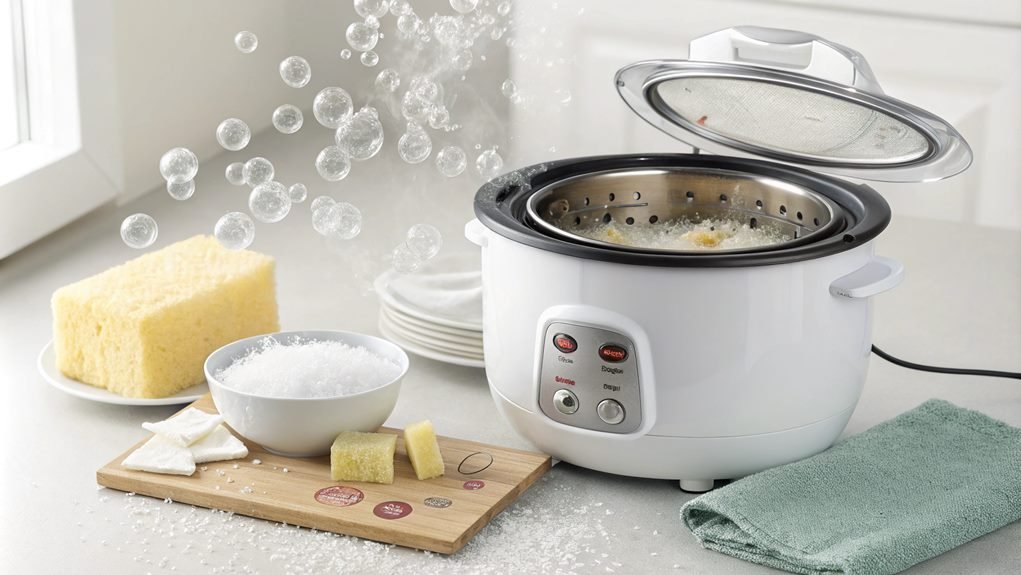
We’ll want to scrub the inner pot with hot soapy water and a non-abrasive sponge to remove any stuck rice or residue without damaging the non-stick coating. Similar to maintenance practices, it’s important to follow a careful cleaning routine that prevents damage to sensitive surfaces.
By creating a regular upkeep schedule for your rice cooker, you can ensure its longevity and best performance. When cleaning the heating element, we should use a slightly damp cloth to gently wipe away any debris while being careful not to let water seep into the electrical components.
Many detachable parts like the inner pot and steam basket are dishwasher-safe, but we’ll need to check our specific model’s manual to confirm which pieces can safely go in the dishwasher.
What is the proper technique to scrub the inner pot?
After removing the inner pot, scrub both its interior and exterior surfaces using a non-abrasive sponge or soft cloth soaked in warm, soapy water. We’ll want to use circular motions while applying gentle pressure to effectively remove any stuck-on rice or residue. Don’t use steel wool or harsh scrubbers, as they can harm the non-stick coating of your inner pot.
For stubborn spots, let the pot soak in warm, soapy water for 10-15 minutes before scrubbing. Pay special attention to the bottom and corners where rice tends to stick.
Once you’ve thoroughly cleaned the pot, rinse it well under running water to eliminate all soap residue. The proper technique includes a final wipe-down with a clean, damp cloth to make certain no cleaning agents remain before drying the pot completely.
How do you clean the heating element?
Cleaning the heating element requires careful attention since it’s directly responsible for cooking performance. We’ll start by making sure the rice cooker is completely cool and unplugged before we clean the inner heating area.
Let’s wipe down the heating element with a damp cloth and mild soapy water, being careful not to let water pool around electrical components. For stubborn buildup, we can use a solution of white vinegar and water to break down mineral deposits. Remember to avoid using abrasive scrubbers that might damage the surface.
To deep clean harder-to-reach areas around the heating element, we’ll use a cotton swab dipped in the cleaning solution.
Once we’re done, we’ll thoroughly dry the entire area with a clean, lint-free cloth to prevent any moisture-related issues before the next use.
Can you use a dishwasher for detachable parts?
Most detachable parts of a rice cooker, including the inner pot and steaming tray, can safely go in the dishwasher as long as they’re marked dishwasher-safe. Before you use the dishwasher, we recommend checking the manufacturer’s instructions to confirm which detachable parts are compatible with machine washing.
When placing parts in the dishwasher, we suggest positioning them securely on the top rack to prevent damage. If your detachable parts aren’t dishwasher-safe, don’t worry – you can easily clean them by hand with warm, soapy water.
As part of regular maintenance, inspect all parts for wear and tear after washing. Remember to thoroughly dry each component before reassembling your rice cooker. While the dishwasher offers convenience, hand washing may help extend the life of your appliance’s detachable parts and maintain their non-stick coating.
How do you handle stuck-on rice in a rice cooker?
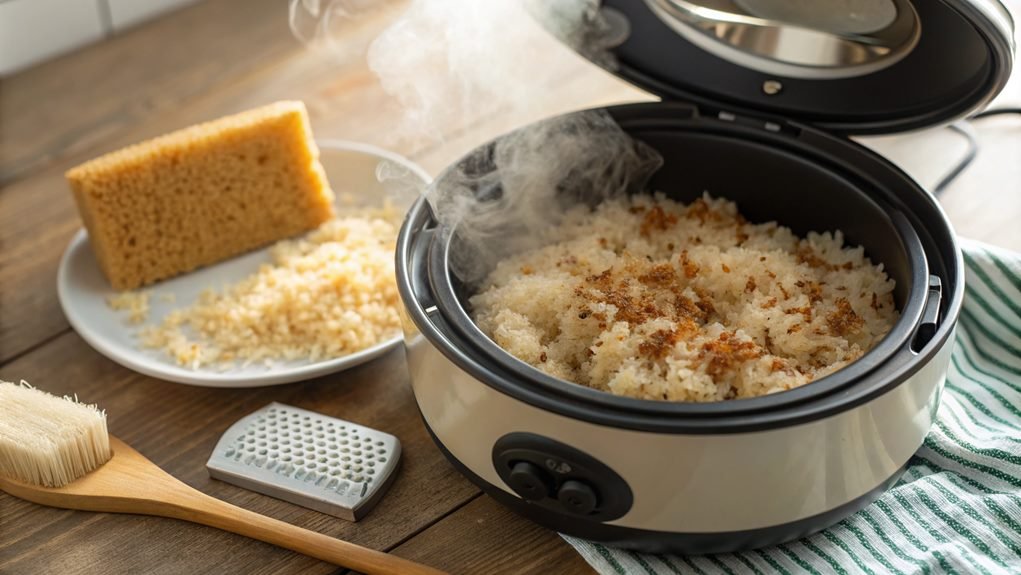
When we’re faced with stuck-on rice, we’ll need to soak the inner pot in warm, soapy water for at least 30 minutes to loosen the residue.
We can safely use a diluted bleach solution for tough spots, but it’s important to rinse thoroughly and let the pot dry completely before the next use.
A plastic spatula or soft-bristled brush works best for scraping away loosened rice without scratching the pot’s surface.
What methods can you use to soak the pot?
Several effective soaking methods can help tackle stubborn, stuck-on rice in your cooker’s pot. We’ll show you proven techniques to dissolve and remove those pesky remnants without damaging your appliance.
| Soaking Method | Duration | Effectiveness |
|---|---|---|
| Hot water + dish soap | 30 mins | Good |
| Baking soda paste | 15 mins | Better |
| White vinegar solution | 1 hour | Better |
| Diluted bleach solution | 20 mins | Best |
Let’s put your pot to soak using any of these methods. For tough stuck-on rice, we recommend starting with hot water and dish soap. If that doesn’t work, move on to a baking soda paste, which offers more scrubbing power. For stubborn cases, a diluted bleach solution will effectively break down residue while sanitizing the pot. Remember to rinse thoroughly after using any cleaning solution.
Is bleach safe for cleaning rice cookers?
A weakened bleach solution can be safely used to clean rice cookers when properly mixed and handled. We recommend using one tablespoon of bleach per gallon of water to create a safe cleaning solution. Before applying the weakened bleach mixture, we’ll want to remove any loose rice and debris from the cooker.
When cleaning with bleach, let’s focus on problem areas where mold or stubborn stains persist. We’ll apply the solution carefully, making sure it doesn’t reach any electrical components.
After letting the solution sit for about five minutes, we need to rinse the rice cooker thoroughly with clean water multiple times. This step is essential to make sure no bleach residue remains.
Once we’ve completed the bleach cleaning, we’ll dry all parts completely before reassembling the cooker.
What tools are effective for removing residue?
Scraping and soaking are our two most effective tools for removing stuck-on rice residue from a rice cooker. When you clean your rice cooker, start by filling the inner pot with warm water and letting it sit for 30 minutes to loosen stubborn bits. We recommend using a nonabrasive sponge or soft plastic scraper to protect the pot’s surface – don’t use steel wool, as it’ll damage the nonstick coating.
For the inner lid and other parts, wipe the inside with a damp cloth or soft sponge.
If you’re dealing with particularly stubborn residue, create a paste using baking soda and water. Apply it to the affected areas, let it sit for 10 minutes, then gently scrub. This method loosens stuck-on rice without risking damage to your cooker’s surfaces.
How to maintain your rice cooker after every use?
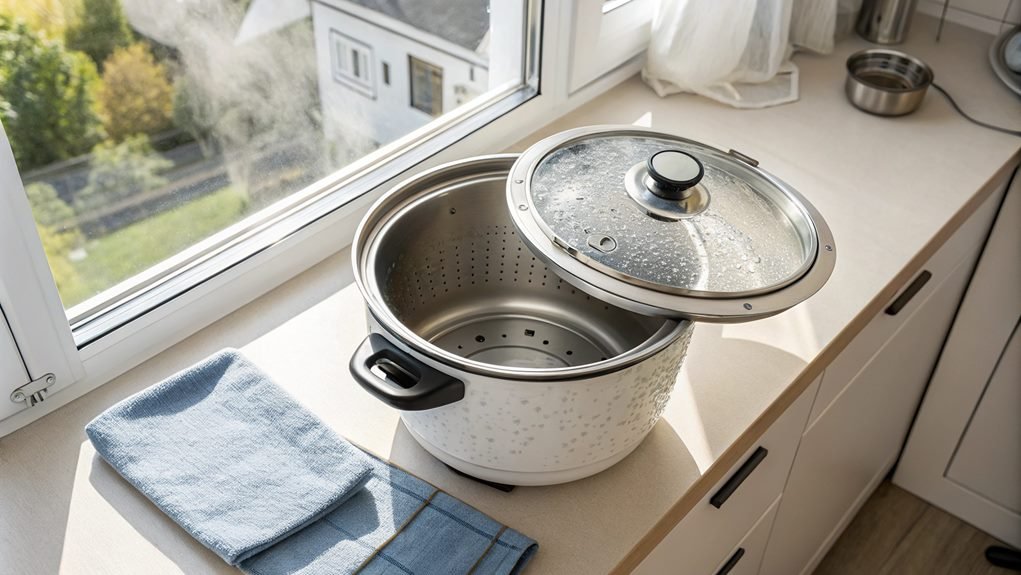
We’ll save ourselves time and hassle by unplugging our rice cooker right after use, which averts any safety hazards and allows it to cool properly before cleaning.
To keep our rice cooker in top condition, we need to wash the inner pot with hot, soapy water after each use and wipe down the exterior with a damp cloth.
Regular maintenance not only prolongs our rice cooker’s life but also prevents unwanted mold growth and guarantees our next batch of rice will taste fresh and clean.
What is the best way to keep your rice cooker clean?
Throughout each use of your rice cooker, proper maintenance helps prevent stubborn buildup and mold growth. We’ll keep your rice cooker in top shape with these essential cleaning practices.
| Area | Cleaning Action |
|---|---|
| Inside Pot | Remove cooked rice immediately after use |
| Lid | Wipe down after each cooking session |
| Exterior | Clean weekly with damp cloth |
| Steam Vent | Check and unclog monthly |
Let’s make maintenance a breeze by tackling small tasks regularly. After each use, remove the inner pot and wash it thoroughly with soap and warm water. Don’t forget to wipe down the inside and outside of the lid where condensation collects. We recommend cleaning the exterior weekly to prevent grease buildup, and checking the steam vent monthly for any blockages that could affect performance.
Why is it important to unplug your rice cooker after use?
For safety and energy efficiency, unplugging your rice cooker after each use is a critical maintenance step that many people overlook. When we unplug the appliance immediately after cooking, we’re not just saving energy – we’re also protecting our investment and ensuring our safety. Leaving it plugged in can lead to unnecessary power consumption and potential electrical hazards.
Once unplugged, we’ll want to let the cooker cool down completely before attempting any thorough cleaning. This cooling period is the ideal time to remove accessories and prepare for proper storage.
We’ve found that this practice not only extends the life of our rice cooker but also makes the cleaning process much safer and more effective. By making unplugging a habit, we’re creating a safer kitchen environment while maintaining our appliance’s top-notch performance.
Tips for cleaning the lid and outside of the rice cooker
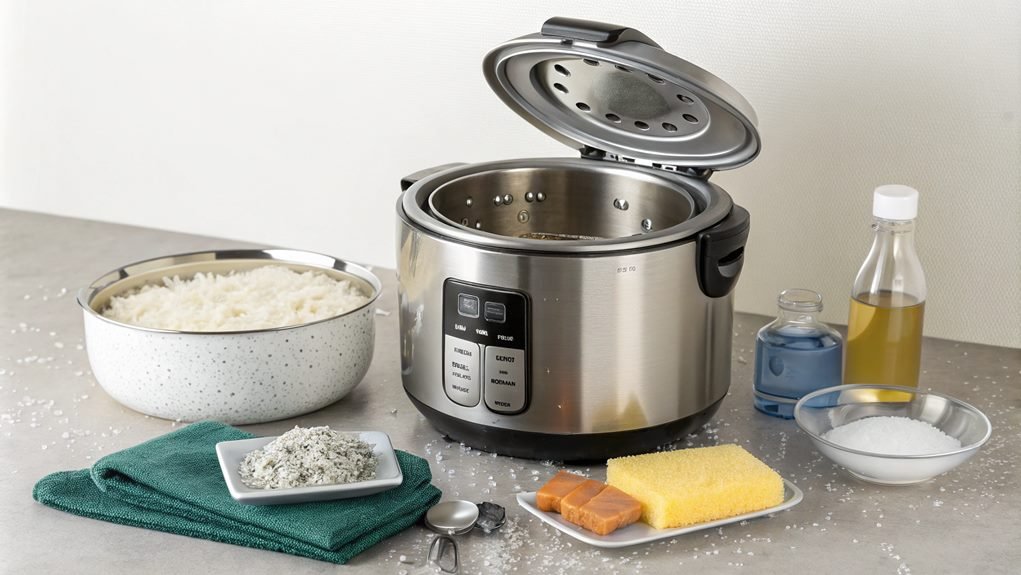
We’ll want to clean the exterior of our rice cooker with a damp cloth and mild detergent, making certain to never submerge the base in water.
For effective lid cleaning, we can remove the inner lid (if detachable) and wash it thoroughly with warm, soapy water to prevent any mold or food buildup.
When cleaning both exterior and lid components, we must make sure the rice cooker is unplugged and completely cool to avoid any electrical hazards or burns.
What should you use to wipe down the exterior?
Cleaning the exterior of your rice cooker requires a gentler approach than the inner components. We’ll want to use a slightly damp cloth to gently clean the outside of the rice cooker, making sure not to get water into any electrical components. Regular maintenance is key to keeping your cooker looking great and functioning properly.
- Use a microfiber cloth lightly dampened with warm, soapy water to wipe away surface dirt
- Apply gentle pressure when cleaning around buttons and display panels
- Choose a lint-free cloth for the final wipe-down to prevent debris from sticking
Keep a dedicated cleaning cloth specifically for your rice cooker to avoid cross-contamination
Remember to avoid harsh scrubbers or abrasive cleaners that could scratch the exterior surface, and never submerge the base unit in water.
How do you clean the inner lid effectively?
While the exterior requires gentle care, the inner lid of your rice cooker needs more thorough attention since it collects steam and food particles during cooking.
We recommend removing the inner lid completely, following your rice cooker’s manual for proper detachment. Once removed, soak it in warm, soapy water for about 10 minutes to loosen any stuck-on residue.
Use a soft sponge to clean both sides of the lid, paying special attention to any grooves or seals where food particles might hide.
If you notice any stubborn stains, create a paste using baking soda and water to scrub them away effectively.
After cleaning, rinse the lid thoroughly and dry it completely before reattaching it to your rice cooker.
What precautions should you take when cleaning?
Safety should be your top priority when cleaning any electrical appliance, including your rice cooker. Make sure you’ve unplugged the unit and let it cool completely before starting the cleaning process.
When cleaning your rice cooker after every use, follow these essential precautions:
- Never submerge the base unit in water – this can damage the electrical components and create safety hazards
- Keep water away from the heating element and control panel while cleaning pot and accessories
- Let all parts become completely dry before reassembling to prevent moisture-related issues
- Don’t use abrasive cleaners or metal scrubbers that could scratch the non-stick coating
We recommend wiping the exterior with a damp cloth, being careful around buttons and switches. These simple precautions will help maintain your rice cooker’s performance while ensuring your safety during cleaning.
Frequently Asked Questions
Can I Put My Rice Cooker in the Dishwasher?
We don’t recommend putting your rice cooker in the dishwasher – it’ll damage the electrical components. Instead, let’s hand wash the removable inner pot and wipe down the outside with soapy water.
How Often Should I Deep Clean My Rice Cooker?
Want to keep your rice tasting great? We’d recommend doing a deep clean every 15-20 uses. If you’re cooking rice weekly, that means a monthly deep clean will keep your cooker fresh and performing perfectly.
Is It Safe to Use Vinegar to Clean My Rice Cooker?
Yes, we recommend using white vinegar as a safe cleaning option for your rice cooker. It’s natural and effective – just mix equal parts vinegar and water, run a cycle, then rinse thoroughly afterwards.
What Cleaning Products Should I Avoid Using on My Rice Cooker?
We don’t recommend using harsh abrasives, steel wool, or strong chemicals that’ll damage the non-stick coating. Let’s also avoid scouring powders and metal scrubbers – they’ll scratch your rice cooker’s surface permanently.
Why Does My Rice Cooker Still Smell After Cleaning?
Like a pesky shadow, lingering odors often mean we’re missing hidden moisture or trapped food particles. Let’s make sure we’re drying thoroughly between uses and checking those steam vents and gaskets for stuck residue.
Conclusion
We’ve journeyed through the ins and outs of keeping our rice cookers sparkling clean, from tackling crusty rice remnants to maintaining that pristine shine. Like tending to a beloved garden, regular care guarantees our cookers continue serving up perfect rice for years to come. With these simple cleaning habits woven into our cooking routine, we’ll never face the disappointment of a grimy cooker or compromised flavors again.


